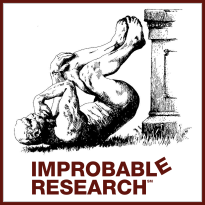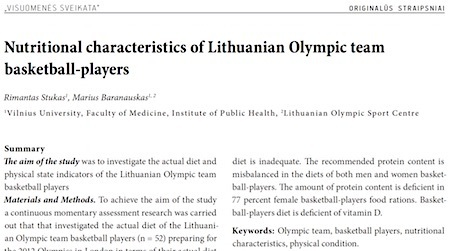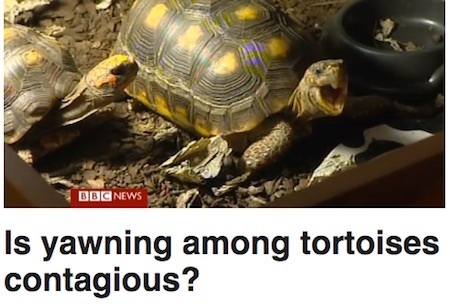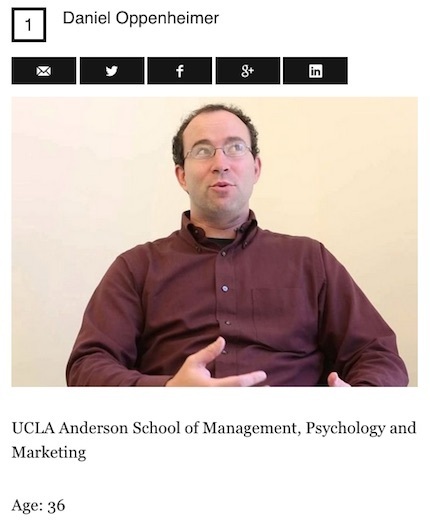Marc Abrahams's Blog, page 333
April 24, 2015
Professor Simon Leonardo Altman
 Professor Simon Leonardo Altman , Emeritus Fellow of Brasenose College, Oxford, is a mathematical physicist whose main work is on group theory, quaternions, and solid state. Since his retirement his main interests have been history and philosophy of science, poetry, especially science poetry, and some work on art theory, mainly concerning right-left problems.
Professor Simon Leonardo Altman , Emeritus Fellow of Brasenose College, Oxford, is a mathematical physicist whose main work is on group theory, quaternions, and solid state. Since his retirement his main interests have been history and philosophy of science, poetry, especially science poetry, and some work on art theory, mainly concerning right-left problems.
His website presents several examples of his science poetry, on subjects as diverse as Theology and the electron, A Villanelle for Hans Christian Ørsted, Heisenberg, and :
“Arithmetic
Ten people have five pounds of rice.
Five of them eat one pound each.
Result
Five people remain hungry, desperate.
Solution
All ten people eat each half a pound of rice.
Objection
The above solution would destroy society
as we know it. It is blatant communism.
Political solution
A rice footprint is allotted to each person
that can afford to buy a pound of rice.
The missing half-pound for each of the rest
is compensated as long as the pound-eater
pays someone to dig a grave for one
of the other five that die of hunger.”
For a recent publication by the professor, see: Empirical Studies of the Arts, Volume 31, Number 2 / 2013, Pages: 223 – 238, Right and Left in Art: The Annunciation.
“Three major effects have been discussed in the literature in order to understand the positioning of the Virgin on the right. They are the direction of motion and the agency effect, both concerning the archangel, and the presentation of the Virgin’s left cheek. It is proposed here that a fourth effect, the power of the first diagonal, is worthy of consideration, largely because it is the only effect that may obtain for variant Annunciations, in which the Virgin is on the left.”

April 23, 2015
The man who studied Shanghai soup dumplings intensively for a year
Christopher St. Cavish has, he says, studied Shanghai soup dumplings, and wants to share (for a small fee) the results of his study. He explains:
The Shanghai Soup Dumpling Index is a scientific investigation into the quality of soup dumplings in Shanghai. It applies a quantitative framework to the existing qualitative descriptors of the Shanghai soup dumpling (hereafter also referred to as “xiao long bao”): thin skin, plentiful soup, abundant filling, fresh meat (皮薄 汁多 馅大 肉鲜). A total of 52 restaurants were sampled for this index between December 2013 and October 2014 in Shanghai, People’s Republic of China.
Four measurements were collected: the weight of the intact dumpling (g); the weight of the soup (g); the weight of the filling (g); and the thickness of the skin (mm). This data was then calculated with the formula [(Filling + Soup / Thickness of Skin) x100] to assign a score representing the quality of structural engineering, the major challenge in the construction of a xiao long bao that meets the colloquial standards.
An analysis of the results combined with directly observed sensory research found xiao long bao with a score of 12.00 or above to demonstrate successful engineering. From a sensory perspective, these samples showed only minor variations, and were classified as Class A. Xiao long bao below this threshold but above a score of 6.75 showed satisfactory engineering and were judged Class B. A full explanation of the methodology, a quantitative analysis of the effect of time post-steaming on a dumpling, a list of all restaurants sampled (including directional information for all 18 Class A and Class B restaurants) and more is included in the full index, available for sale.
St. Cavish further explains himself in an essay called “The Man Who Spent A Year Studying Xiao Long Bao“.
(Thanks to investigator Gerry Sussman for bringing this to our attention.)
BONUS (distantly related): “An astonishing 400 tons of dumplings a day“

Cannibalism nutrition study, or translation snafu?
Lesson: When translating your study title into another language, check for cannibalism. Here’s an example:
“Nutritional Characteristics of Lithuanian Olympic basketball team-players,” Rimantas Stukas [pictured here], Marius Baranauskas, Proceedings of the International Conference on Non-Communicable Diseases Management, Klaipėda, 2012, p. 25.

April 22, 2015
Podcast #8: The scientists who taste-tested tadpoles
The scientists who taste-tested tadpoles figure heavily in this week’s Improbable Research podcast.
LISTEN on Play.it or iTunes (or DOWNLOAD it, and listen later).
SUBSCRIBE on Play.it or iTunes, to get a new episode every week, free.
This week, Marc Abrahams tells about:
Taste-testing tadpoles. (Richard Wassersug, and earlier, at Dalhousie University/ “On the Comparative Palatability of Some Dry-Season Tadpoles from Costa Rica,” American Midland Naturalist, vol. 86, no. 1, July 1971, pp. 101-9. / dramatic reading by psychologist Jean Berko Gleason)
Some scientific mysteries about eunuchs. (Roberts, Lesley F., Michelle A. Brett, Thomas W. Johnson, and Richard J. Wassersug (2007). ‘A Passion for Castration: Characterizing Men Who Are Fascinated with Castration, but Have Not Been Castrated.’ Journal of Sexual Medicine 5 (7): 1669–80. /Brett, Michelle A., Lesley F. Roberts, Thomas W. Johnson, and Richard J. Wassersug (2007). ‘Eunuchs in Contemporary Society: Expectations, Consequences and Adjustments to Castration. Part II.’ Journal of Sexual Medicine 4 (4): 946–55.)
Motion sickness in amphibians. (“Motion Sickness in Amphibians,” Richard J. Wassersug, Akemi Izumi-Kurotani, Masamichi , and Tomio Naitoh, Behavioral and Neural Biology, vol. 60, 1993, pp. 42-51. / Dramatic reading by Jean Berko Gleason)
Sexual and other moves of frogs in low gravity. (“Amphibian Amplexus in Microgravity,” Tomio Naitoh, Masamichi Yamashita, Akemi Izumi-Kurotani, Shigefumi Yokota, and Richard J. Wassersug, ” Zoological Science, vol. 12, no. 1, 1995, pp. 113-116. / Dramatic reading by physicist Melissa Franklin)
Turtles and snakes in free fall. (“The Behavioral Reactions of a Snake and a Turtle to Abrupt Decreases in Gravity,” R. Wassersug and A. Izumi-Kurotani, Zoological Science, vol. 10, no. 3., June 1, 1993, p. 505. / Dramatic reading by Melissa Franklin)
The great British tasting-all-sorts-of-eggs project. (Hugh B. Cott / ‘The Palatability of the Eggs of Birds – Illustrated by Experiments on the Food Preferences of the Hedgehog (erinaceus-europaeus).’ Proceedings of the Zoological Society of London, 121 (1): 1951, 1–40.)
When cows stand and when they sit. (Tolkamp, Bert J., Marie J. Haskell, Fritha M. Langford, David J. Roberts and Colin A. Morgan (2010). ‘Are Cows More Likely to Lie Down the Longer They Stand?’ Applied Animal Behaviour Science, 124, (1-2): 1–10.)
The mini-opera “The Blonsky Device”, act 4 – the thrilling conclusion. (The opera premiered as part of the 2013 Ig Nobel Prize ceremony. Henry Akona orchestrated and directed. The opera starred Maria Ferrante (as Charlotte Blonsky), Martin Kelly (as George Blonsky), Philip Lima (as the zookeeper), and Miles Rind (as the patent examiner), with an orchestra of biomedical researchers directed by Dr. Thomas Michel. Karen Hopkin narrates. The opera also featured, in non-singing roles: Melissa Franklin, Peaco Todd, Alex Nemiroski, and Nobel laureates Roy Glauber, Dudley Herschbach, Frank Wilczek, and Eric Maskin.)
The mysterious John Schedler did the sound engineering this week.
The podcast is all about research that makes people LAUGH, then THINK — research about anything and everything, from everywhere —research that’s good or bad, important or trivial, valuable or worthless. CBS distributes it, both on the new CBS Play.it web site, and on iTunes.

“No shit Sherlock science – why it’s still worth it”
“No shit Sherlock science – why it’s still worth it, ” politely screams the headline on an essay by Justin Waring, Professor of Organisational Sociology at University of Nottingham, in The Conversation. Waring begins:
One of the great fears for scientists is that their work will be met with derision, especially when someone has been handed a sizeable sum of money to confirm what the man and woman in the street already knows full well. You only have to look at the annual Ig Nobel awards to get the idea. Driving while using a mobile phone is more dangerous than without one. Men don’t like to go bald. We’re likely to wear more clothes when we’re cold. All of these fall within what we might call, with apologies to Sir Arthur Conan Doyle, the “No shit, Sherlock” category of science.
But there are often valid reasons for studies of this kind. For instance, it’s not wholly inconceivable that experiments might just show, contrary to all gut instinct and common sense, that driving while using a mobile phone is actually remarkably safe. Granted, it seems unlikely; but the point is that we can’t completely rule out the possibility. However much we think we know something, we have to be as sure as we can….

Future Sock
“Why do people need to keep on buying so many socks? Given the technological capabilities available, the creation of socks that do not wear out would not seem to be beyond our collective productive capacities. Indeed, […] they already exist, but the space to make this choice has not been opened up. They are not made readily available because it is not profitable to do so.”
– says Dr. Damon Taylor , who is a Senior Lecturer in Design at the University of Brighton, UK. His paper ‘Spray-On Socks: Ethics, Agency, and the Design of Product-Service Systems’ (in : DesignIssues, Summer 2013, Vol. 29, No. 3, Pages 52-63.) not only looks at the possibilities which might be offered by spray-on-socks, but also socks made of Kevlar™ (“hard wearing, yet warm and yielding”).
“To design a system in which people spray on their socks in the morning is to propose that such a scenario offers an acceptable way to live. By becoming more than the shaper of an individual material artifact and envisioning and constructing systems of provision, the designer necessarily takes on a more explicitly ethical role. Such a position operates at the level of problem setting, of identifying the product and the telos—or final cause—of the process, of establishing the ‘why’ of the system. Such justifications will then depend upon certain values that come to act protologically in the action of the system’s operation.”
Note: Although Spray-on-Socks might currently remain, for many, a purely conceptual thought-experiment, a close analogue, Spray-on-Stockings, have been commercially available for some time.

April 21, 2015
A look back at contagious yawning in tortoises
This 2011 BBC TV News report profiled Ig Nobel Prize winner Anna Wilkinson:
A Nobel prize may be the most sought after gong in the scientific world, but a lecturer from the University of Lincoln has picked up the next best thing.
Dr Anna Wilkinson has won an Ig Nobel prize, to honour achievements that first make people laugh and then make them think.
The award was given for her experiments into whether yawning among tortoises is contagious.
Anne-Marie Tasker reports.

April 20, 2015
Ig Nobel Prize winner Oppenheimer named the #1 business school professor
Fortune magazine tells how an Ig Nobel Prize winner was named the top young business school professor:
The 10 top B-school professors under 40
Business school professors come in all stripes and colors. But the very best of the lot share a few common qualities: They are all supremely well educated, highly talented researchers, exceptional teachers, and, perhaps most important of all, they inspire students and their students inspire them.
With these qualities in mind, Poets&Quants has compiled its 2015 list of the very best business school professors under 40. Winning an Ig Nobel Prize is not enough to get a spot on this list. Neither is taking students to the Amazon. Or getting a class to show up wearing beer helmets. Or having your research featured on the John Oliver show. Or applying neuroscience to the negotiating process. But all of those things help….
Number one on the list is Danny Oppenheimer:
Danny Oppenheimer was awarded the 2006 Ig Nobel Prize for literature, for his report “Consequences of Erudite Vernacular Utilized Irrespective of Necessity: Problems with Using Long Words Needlessly” (published in the journal Applied Cognitive Psychology, vol. 20, no. 2, March 2006, pp. 139-56).
BONUS: A new essay by Danny Oppenheimer, in Time magazine: “The problem’s not the NCAA. It’s players’ expectations of their peers“

Ouroboros meets Artificial Intelligence
 If you’ve examined The Enigmatic Book of the Netherworld , you’ll know that the mythical creature Ouroboros was a snake-like being traditionally depicted in the act of swallowing its own tail. The inherent symbolism of Ouroboros’s circularity has recently been adopted by the Artificial Intelligence fraternity – specifically by Dr. Knud Thomsen of the Paul Scherrer Institut, Switzerland. In 2008 he developed The Ouroboros Model of self-referential recursive processing with alternating phases of data acquisition and evaluation. How does it work?
If you’ve examined The Enigmatic Book of the Netherworld , you’ll know that the mythical creature Ouroboros was a snake-like being traditionally depicted in the act of swallowing its own tail. The inherent symbolism of Ouroboros’s circularity has recently been adopted by the Artificial Intelligence fraternity – specifically by Dr. Knud Thomsen of the Paul Scherrer Institut, Switzerland. In 2008 he developed The Ouroboros Model of self-referential recursive processing with alternating phases of data acquisition and evaluation. How does it work?
“An iterative monitor process termed ‘consumption analysis’ is checking how well expectations triggered a one point in time fit with successive activations. A principal activity cycle is identified. Freezing for once the perpetually cycling activity and selecting an almost arbitrary starting point the following succession of steps can be outlined:
… anticipation,
action / perception,
evaluation,
anticipation,…
These sub-processes are linked into a full circle, and the snake bites its end, the Ouroboros devours its tail.”
For further clarification, why not check out this video, from the Third Conference on Artificial General Intelligence, in which Dr. Thomsen highlights Concept Formation in the Ouroboros Model.
Note: The video might seem to drift in and out of focus. This is normal. It’s the video – not you, or your computer.

April 19, 2015
Earthy, tasty probiotic recipes
Probiotic starter cultures come in many different flavors. Here are two that qualify as Not-off-the-shelf.
1. “Characterization of Lactic Acid Bacteria Isolated from Infant Faeces as Potential Probiotic Starter Cultures for Fermented Sausages.” This study was honored with the 2014 Ig Nobel Prize for nutrition.
2. Vaginal bacteria as probiotic starter culture for yogurt. Janet Jay, writing in Motherboard, tells the story of how this recipe came into existence, under the headline “How to Make Breakfast With Your Vagina“. Rosanne Hertzberger ponders the result. (Thanks to Charles Oppenheim for bringing this to our attention.)

Marc Abrahams's Blog
- Marc Abrahams's profile
- 14 followers







